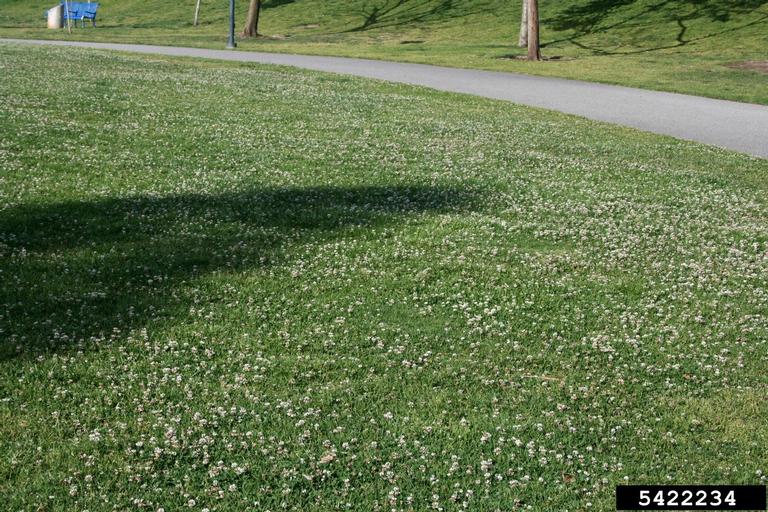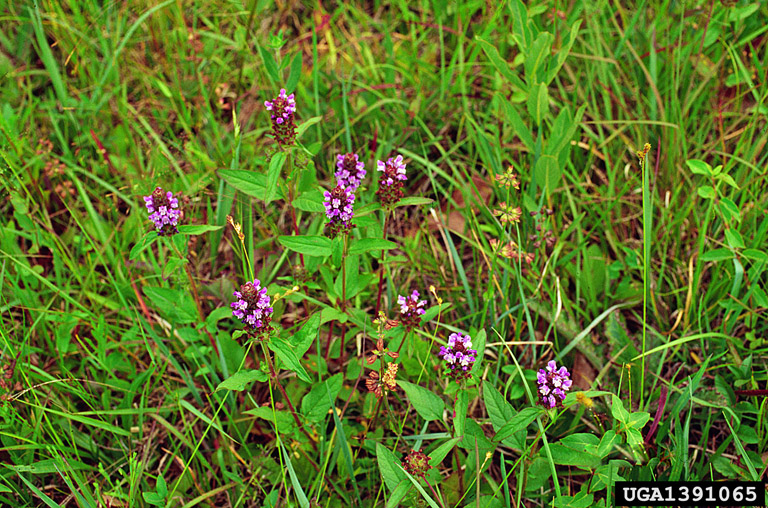A bee lawn is a way to benefit pollinators in our landscapes by providing additional floral resources, and often utilizes a mix of low-growing flowering plants in addition to turf species. Although flower gardens also provide flowering plants for pollinators, bee lawns can be multi-functional in their usability for recreational purposes with the added benefit of providing food for bees.
Habitat loss is one of the major factors implicated in the global declines of native bee species. Providing resources utilized by these critical pollinators can assist in mitigating this. Research through University of Minnesota has found 50 species of bees utilizing the flowers in bee lawns.
The purpose of bee lawns includes providing nutritious sources of nectar and pollen for pollinators, especially in urban environments, where these resources can often be scarce and difficult to find. Additional factors include recreational usability, and reducing inputs, e.g., irrigation, nutrients, weed control, and time spent mowing. Flowering plants suited for bee lawns have a variety of common characteristics including: low-growing and flowering heights, perennial life cycles, the ability to persist with turf species, and tolerance of mowing and foot traffic.
An important consideration is that bee lawns don’t necessarily mean weedy lawns or no-maintenance lawns, but instead require different types of management and serve different functions than traditional turfgrass lawns.
Not all bee lawns are created equal, and some work better than others.
Here are some turfgrass species that can work well for bee lawns:
Cool-season turf
A mix of fine fescues (which includes species such as: creeping red fescue, chewings fescue, hard fescue, and sheep fescue) are some of the best options for bee lawns due to reduced needs for inputs including irrigation, fertilizer, and weed controls, in addition to their compatibility with flowering plants. That being said, fine fescues do not tolerate heavy foot traffic, and may not be a suitable option for turf varieties in areas with heavy recreational use.
Kentucky bluegrass (KBG) is another option for bee lawns, though it requires higher maintenance (including more frequent irrigation and fertilizer inputs). KBG is considered an invasive species in some areas so do your homework.
Warm-season turf
Although there is limited research currently available for warm season turfgrasses and their compatibility with flowering plants specifically for bee lawns, certain species require lower inputs and could be a good option.
Centipede grass is a suitable option for a low-maintenance warm season turf species, and has been utilized in studies evaluating early-spring flowering bulbs as part of a lawn ecosystem for pollinators (see resources for more information).
Bermudagrass can also be used with flowering plants, though it has higher input needs than centipede grass. For more detailed information on warm season turfgrass species suitable to your geographic area and their respective input needs, I would encourage you to reach out to your local and regional extension offices.
Here are examples of flowering plants that can work well with turfgrass species:
Dutch white clover (Trifolium repens)
Dutch white clover (often referred to as white clover or clover) is a common occurrence in many lawns. Although some consider this to be a weed, white clover can provide several benefits including its adaptability to many soil types, the ability to withstand some shade and foot traffic, and the added benefit of being able to fix its own nitrogen. Like its name suggests, white clover produces white (and sometimes pink) flowers, and grows to a height of 4-6 inches. In addition to its hardiness, white clover is also an excellent source of forage for bees due to its long bloom time, and the great quality of nectar (high sugar content) and pollen (high protein content).

Creeping thyme (Thymus praecox)
Creeping thyme is related to some of our favorite culinary herbs, and produces fragrant purple/pink flowers. It has a low growth habit (<6 inches) and can tolerate some foot traffic. It performs best in well-drained sandy or loamy soils, and is also considered to be drought tolerant and deer-resistant.
Self-heal (Prunella vulgaris ssp. lanceolata)
Self-heal is native to North America, Europe and Asia, and research from University of Minnesota has shown that 95% of the pollinators that visited the flowers were native bee species. It produces purple flowers and does well in a variety of soil types (with the exception of sandy soils) and in sun or partial shade.

Common violet (Viola sororia)
Violets are another flower that some consider to be a weed in home lawns. These spring blooming yellow, purple, and white flowers can be a good source of nectar for pollinators such as butterflies and bees. Violets grow to heights of 4-8 inches, and do well in a variety of soil types in addition to sun and shade.

Other flowers
Additional low-growing flowers could also be great additions to bee lawns, including early spring flowering bulbs that can persist with turfgrass for multiple years, such as crocus and grape hyacinth (Muscari spp.), which have been observed to attract pollinating insects (especially honey bees).
For more information on the regional suitability of flowering plants to incorporate with turfgrass for bee lawns, contact your local extension offices for more information.
University of Minnesota’s Bee Lab has a lot of
excellent information on bee lawns, their establishment, and the diversity of
bees that visit them:
https://extension.umn.edu/landscape-design/planting-and-maintaining-bee-lawn#turfgrasses-for-bee-lawns-2939360
https://turf.umn.edu/news/if-you-build-it-who-will-come-evaluating-diversity-bees-flowering-lawns
Additional Resources:
https://www.canr.msu.edu/news/consider-a-flowering-bee-lawn-to-help-pollinators
https://extension.psu.edu/the-buzz-about-bee-lawns
Wisdom, M. M., Richardson, M. D., Karcher, D. E.,
Steinkraus, D. C., & McDonald, G. V. (2019). Flowering persistence and
pollinator attraction of early-spring bulbs in warm-season lawns.
HortScience, 54(10), 1853-1859.
https://journals.ashs.org/hortsci/view/journals/hortsci/54/10/article-p1853.xml
Larson, J. L., Kesheimer, A. J., & Potter, D. A.
(2014). Pollinator assemblages on dandelions and white clover in urban and
suburban lawns. Journal of Insect Conservation, 18(5), 863-873.
https://link.springer.com/article/10.1007/s10841-014-9694-9
Very informative! thanks for the insight!
I wish I would have seen the misconception that dandelions are “first food for bees” addressed. From what I’ve researched, the nectar is of poor quality (resulting in poor or no larval development) and common sense says that a weed like that is allowed to proliferate unchecked (no mow May) it spreads to other properties where some home owners will resort to pesticides that will harm the bees. There are so many other plants and trees that provide “first food” AND provide a good quality nectar.
Hi Susan, that is a great point. The dandelion question is a complicated one, and dandelions have been known to fill feeding gaps for bees in situations where other, more nutritious, sources of nectar and pollen are unavailable (especially in urban areas). Overall, yes- it is not the best quality of nectar and pollen for bees, since there are many other sources with greater nutritive value available. There are certainly far better sources of early season nectar and pollen out there for bees, but since I was speaking about bee lawns (and not lawn weeds) I wanted to keep the focus of the article pretty concise.
I think it is worth mentioning the native species of self heal is called narrow leaf self heal ( Prunella vulgaris ssp / var lanceolata. ) We use it often in the habitats we create. It is also very inexpensive as seed so I can’t see any reason to use the European variety.
I also think the focus of this article is urban areas, thus the suggestion of white clover. In the native flowering wetlands we create along the shorelines, I never use something as weedy as domestic clovers. I can see using them in town, but not spreading them out in the wild.
Good catch! I have amended the post to include the subspecies. And yes, this is geared towards more urban areas, where sources of nectar and pollen are often more scarce.